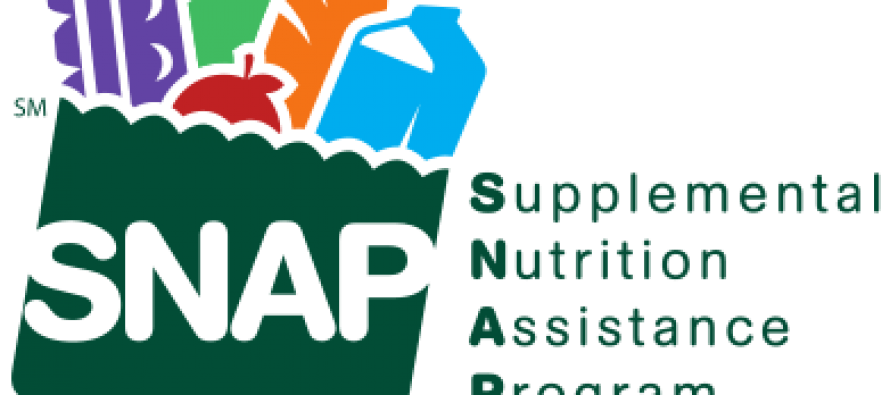More food stamp cuts coming

 Last week, expansions ended to the Supplemental Nutrition Assistance Program (SNAP), better known as the Food Stamp program. Food stamp recipients will see their benefits cut depending on the size of their family. A family of four, for example, will face a $36 monthly cut, while a one person household will only face a $1 cut to benefits. But this is only the beginning of reining in the program.
Last week, expansions ended to the Supplemental Nutrition Assistance Program (SNAP), better known as the Food Stamp program. Food stamp recipients will see their benefits cut depending on the size of their family. A family of four, for example, will face a $36 monthly cut, while a one person household will only face a $1 cut to benefits. But this is only the beginning of reining in the program.
The Los Angeles Times provided plenty of anecdotes about the cuts in its story about the program:
“The impoverished are forced to eat junk if we want to eat,” said 32-year-old Tabitha, a mother of a 2-year-old and a 7-year-old staying at a Culver City shelter, who asked that her last name not be used because she said she was embarrassed. “It’s going to be difficult, as it already has been. …”
Friday’s benefit reduction was meant to coincide with a brightening economy, yet many Americans remain stuck in poverty despite improvements from the worst of the recession.
“I think it’s a horrible thing,” said Najuah Mudahy, 30, also of the Culver City shelter, a food stamp recipient who works two jobs, as a clerk at a shoe store and a hostess at a California Pizza Kitchen. Both bring in $9 an hour. Mudahy said she runs out of money to keep her 3-year-old daughter fed before the end of every month, even on dinners of canned soup.
“It only forces people to do desperate things,” she said of the cuts.
SNAP has grown dramatically in recent years. Around 19 million Americans received benefits in 2002. By 2007, 7 million more Americans were enrolled in the program. And by 2012, 47 million Americans were enrolled in the expanded program. Costs ballooned from $35 billion in 2007 to $80 billion in 2012.
Increase
So why the dramatic increase?
Two reasons: the economic recession and policy changes that made it easier to enroll in the program. The Washington Post explains:
Defenders of the program typically argue that enrollment rose because we had a horrific recession and unemployment hit the stratosphere. The Supplemental Nutrition Assistance Program (SNAP) is supposed to kick in to help families hit by economic distress. The program has kept 4.7 million people out of poverty. There’s no problem here. And so on.
Some conservatives, meanwhile, have emphasized that a big chunk of the increase is due to policy changes by Washington. In 2008, Congress allowed states to relax their standards for who could join the program. (Jobless adults could stay in the program if they lived in high-unemployment areas, for instance.) Then, as part of the 2009 stimulus bill, Congress temporarily boosted food-stamp benefits.
The cuts that began at the start of this month were mandatory; the expansion was only set to last for so long. But more cuts might be coming in the future. The House and Senate are currently debating how much to cut SNAP. Conservatives are arguing for more restrictions about who can join the program.
The House bill would remove 3.8 million people from the food-stamp rolls over the upcoming year by making two big changes:
— First, it would reinstate limits on benefits for able-bodied, childless adults aged 18 to 50. These recipients would only be able to collect limited benefits — up to three months over a three-year period — unless they worked more than 20 hours per week or enrolled in job-training programs. (States are currently able to waive these latter requirements when unemployment is high.)
Conservatives have argued that reinstating the work requirements will encourage adults to find jobs more quickly. Liberal critics have countered that employment opportunities are still scarce in many parts of the country — many Americans will simply lose their food aid without finding work. This change would remove an estimated 1.7 million people from the food-stamp rolls.
— The second big change is that the House bill would restrict states’ abilities to determine a person’s eligibility for food stamps based in part on whether they qualify for other low-income benefits. This is known as “categorical eligibility” and has generally allowed families just above the poverty line to receive food stamps if they have unusually high housing costs or are facing other hardships.
This second change would take another 2.1 million people off food stamps in 2014 and then remove an additional 1.8 million people per year for the next decade.
It’s unclear how many of these cuts will actually get passed into law, however, since the House and Senate still have to figure out how to reconcile their two bills.
CalWatchdog.com will continue covering changes to SNAP in the upcoming months as farm bill negotiations continue.
Related Articles
Courts' 2-Billion-Buck IT Bust
FEB. 22, 2011 By KATY GRIMES While courtrooms across the state are being closed, courthouse employees furloughed and criminal and
Video: Can CA tax its way to prosperity?
California taxes are going up, but according to Americans for Tax Reform’s Grover Norquist, the new revenue isn’t going solve
Rizzo heads to slammer
Robert Rizzo is going to jail. Facing over 100 counts of corruption and associated wrongdoing, he will spend 12 years




